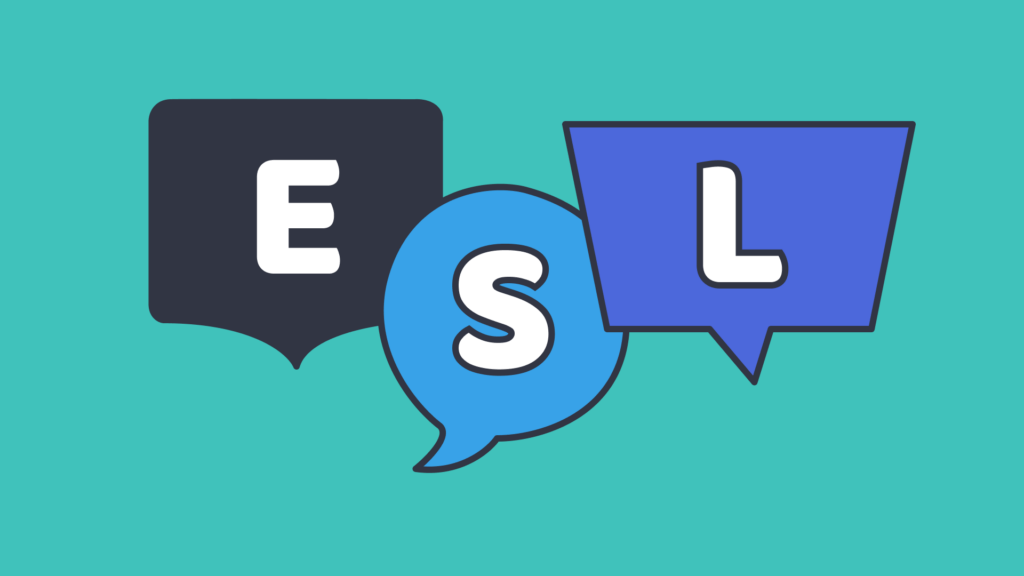6 Tactics for teaching synonyms in the classroom
In this guide
Defining a synonym is pretty simple: they’re words that have the same–or almost the same–meaning as another word. The Merriam-Webster dictionary estimates that there’s at least one million words in the English language, including antonyms, antonyms, acronyms, heteronyms, paronyms, numeronyms, and…that’s where teaching synonyms gets complicated.
Students learn vocabulary through reading, listening, speaking, and writing. Recognizing and using synonyms are a vital foundation for future reading comprehension, and the earlier students are exposed, the better. The National Center on Improving Literacy states that “ the gap between the growth of children with less exposure to rich vocabulary and that of their peers often widens over time”.
It’s not enough for students to simply define a synonym or match words–they’ll need to know how, when, and why to use them. That’s why I’ve compiled this collection of teaching tactics that goes beyond worksheets.
1) Partnered activities
Matching pairs of synonyms on a worksheet is a lesson that feels old as time. It’s a classic for a reason, but it can get repetitive and boring for students. I like to move the activity off the worksheet by having students pair synonyms with a partner in a game. This is a great for students to work on group participation skills and active learning.
What you’ll need: Index cards or paper cut outs.
- First, come up with a list of words and one of their synonyms, and then write each word on a notecard. You can do this ahead of time, or have students each fill out a card. For a creative twist, students can use cut outs or fun shapes as well.
- Each student will hold onto one card, but they won’t reveal it until everyone is out of their seats and ready to begin. When they’re ready, they’ll go out to find their synonym partner. For example, the student with “small” has to find the student with “tiny”.
- Depending on how much time you have, students can repeat these activities a few times by shuffling cards back to the class and starting over. For an extra twist, students could stick the cards to their foreheads or shirts and look for their partner silently.
- This can be a great way to introduce new vocabulary as well. Introduce students to the new vocabulary and their meanings, and use them for the hunt. Students could use a word bank to record their new vocabulary before they hunt for their partner.

2) Synonym bingo
Bingo is an easy, classic game that requires little to no prep. All you need is a blank bingo card and a list of synonyms. It’s another way to ditch worksheets and help students develop auditory learning skills.
What you’ll need: An empty Bingo card template, marker stamps or small objects to be Bingo checkers.
- First, provide students with a list of words and a few of their synonyms, either on the board or on a worksheet. Alternatively, students could brainstorm vocabulary or pull them from their word bank. Have students choose 16 words to fill into their empty bingo cards.
- Once students are seated and ready to begin, read out random synonyms from the list.
- Students will mark off any matching synonyms on their board until one wins. You can call out the words, or have a student take on the task instead.
For the next round, have students pass their cards to a partner or shuffle all of them to redistribute.
3) Utilizing active recall
Active recall is a great way to enhance learning and improve memorization. It’s also another fun way for students to explore synonyms without using word banks, lists, thesaurus or worksheets. That means little to not prep on your end too, so it’s a win-win for everyone. This activity helps students recognize and use synonyms in real time.
Write down three to four words on the board or in a visual space that the entire class can see. Students will volunteer synonyms for these words without the aid of a thesaurus or word bank. Consider a writing format like:
Excited
1.______
2.______
3.______
This activity could be answered by groups or pairs as well, depending on the size of your class and how much time you have. If a class-wide discussion isn’t possible, I like to use the Wraparound Method. This ensures that every student gets a chance to participate, and it helps students stay on track with the discussion.
This can be used as a quick warm-up for a class opener as well.
This is one of my go-to class openers to activate prior knowledge. It’s easy to modify for whatever you need, and it’s a great way to get students in the right mindset for what they’ll learn. It helps students articulate what they’ve learned with others and consider new or different ideas.
This activity only takes about five minutes, and you can prepare the prompts and instructions ahead of time. Students will answer the prompts, then pair up with a partner to reflect and consider any similarities. Then, they can choose one major idea or answer to share with the class as well.
- Students will spend the next five minutes answering the following question/s: ex:
- How would you define “synonym” in your own words?
- Can two different words mean the same thing? If so, can you think of any examples?
- Brainstorm three synonyms for ….
- What’s the purpose of using one word over another if they both mean the same thing?
- Pose the questions to your students and have them use the Think, Pair, Share strategy.
- After answering these questions, students will pair up to reflect on what ideas they had in common.
- The pair will choose one major idea or answer, and can share it with the class.
This activity can be used with a journal as well. Just have students write down their responses before pairing up for discussion.

5) Spinning synonyms
This activity is another familiar twist on a game students are probably already familiar with: the spinning wheel of fortune. This activity has a little of everything: active recall, spelling, and vocabulary building. It’s also a great way for students to hone their listening and speaking skills.
As for the wheel itself, there are two ways you could use one in the classroom:
- This online spinning wheel is easy to customize, and can be displayed on a smartboard, digital projector, or used for online learning.
- Or you want to get crafty, try making a spinning wheel out of cardboard with the class.

- Once you have a wheel, it’ll need to be populated with vocabulary. This works best with vocabulary students already know or are actively learning.
- Fill in each slot on the wheel with a word, and take turns spinning the wheel.
- When the wheel stops, have students replace whatever word it landed on with a synonym.
- For an additional challenge, have students try to spell out the synonym too. Continue until every word is replaced.
You can be the sole wheel spinner, choose volunteers, or use the Wraparound method to make sure every student takes a spin.

6) Synonyms and ESL
Synonyms are an additional challenge for students learning English as a second language.
When it comes to deeper fluency, I’ve found that many struggle with incorporating and understanding them.
Synonyms are vital for understanding context and connotation–two broader things that are essential for true fluency yet often the hardest to learn. It’s a wall I’ve hit trying to gain deeper understanding in other languages, and it’s one I’ve seen otherwise fluent students struggle with too.
ELLs may be able to read the words but it doesn’t mean they will understand the text. They are not aware of information that the author left unsaid; the information that “everyone knows.
(Haynes, 1997)
A foundational understanding of synonyms won’t just expand students’ early vocabulary, but it’ll help them communicate their ideas better in the future too. Try these tips for English language learners:
- Use familiar vocabulary as your foundation. Have students generate a list of commonly used or encountered words, and go over a few synonyms for each word. This can be especially useful combined with a word bank.
- Give students a set of synonyms, then explore when and how to use them. For example, when would you use “gigantic” instead of “big”?
- Go over the context for each synonym. For example, how can you tell when “gigantic” is being used as a hyperbole and when it’s not?
- Examine sentence structure and tone when students encounter synonyms. Ask them to consider why an author used synonyms.
- Make sure to encourage students to ask questions, and thank them when they do. Some students may struggle with embarrassment or fear when asking questions.
If you’re still on the hunt for more lesson plans and ideas, check out ClickView’s collection of English grammar resources. They can be a great bridge for introducing or incorporating concepts like homonyms and antonyms as well.
References
- Handouts, E.L. (2023). The importance of teaching synonyms to EFL learners. [online] ESL Lesson Handouts. Available at: https://www.esllessonhandouts.com/the-importance-of-teaching-synonyms-to-efl-learners/.
- Xu, J., Wu, A., Filip, C., Patel, Z., Bernstein, S.R., Tanveer, R., Syed, H. and Kotroczo, T. (2024). Active recall strategies associated with academic achievement in young adults: A systematic review. Journal of Affective Disorders. doi: https://doi.org/10.1016/j.jad.2024.03.010.
- Evidence-Based Practices for Vocabulary Instruction for Preventing Educational Risk Licensed under Creative Commons BY-NC-ND 4.0 International. (n.d.). Available at: https://meadowscenter.org/wp-content/uploads/2022/04/STRIVE_vocab-Brief31.pdf.

Amanda Joachim
briefcase iconEducation & Research Consultant
Amanda Joachim is an educational media consultant, researcher, and writer. Her interdisciplinary and creative approach is inspired by her own experiences learning and working in the Philadelphia school district.
Other posts
Want more content like this?
Subscribe for blog updates, monthly video releases, trending topics, and exclusive content delivered straight to your inbox.











